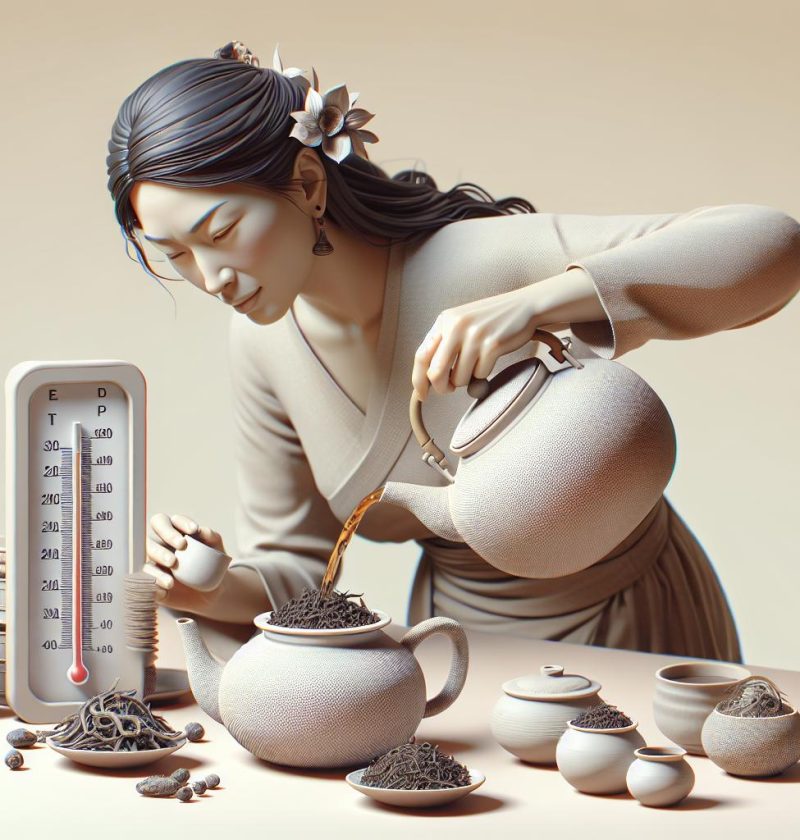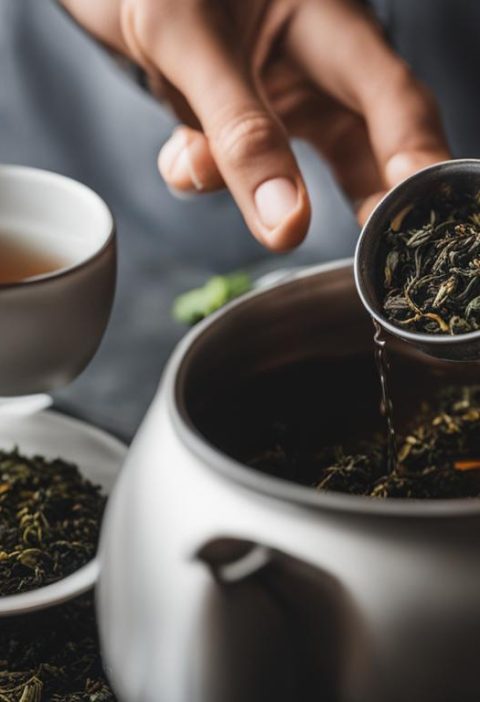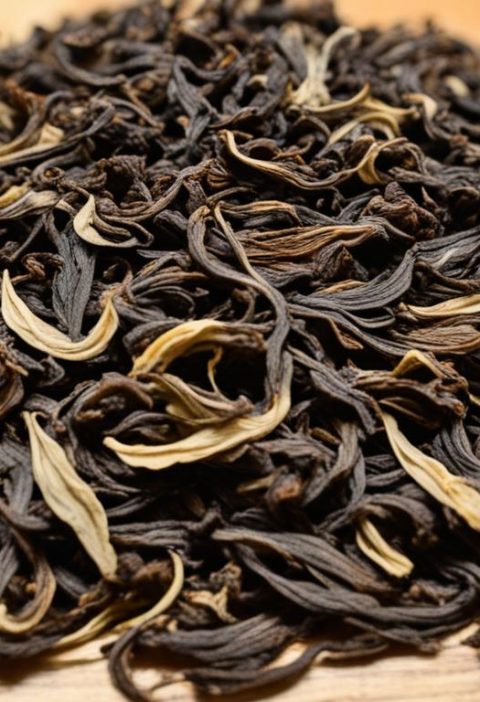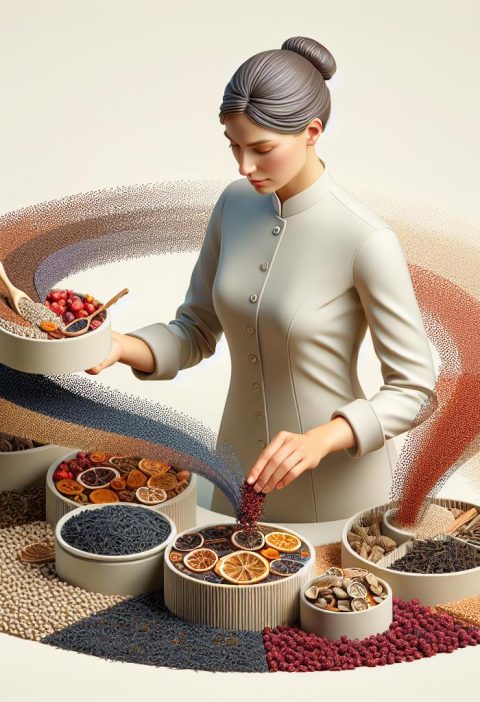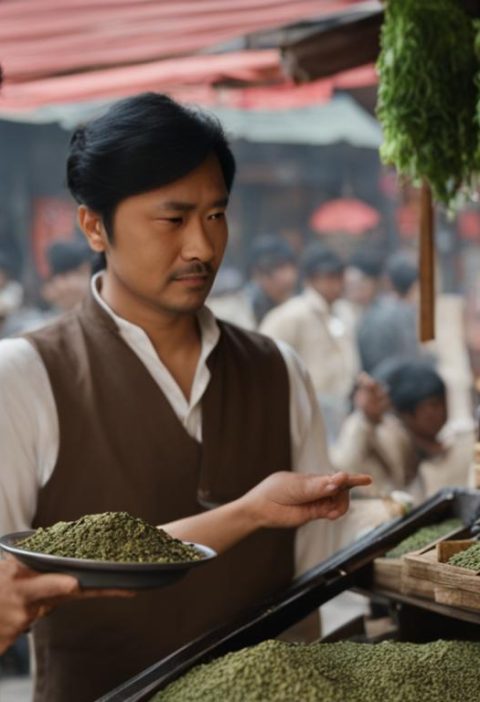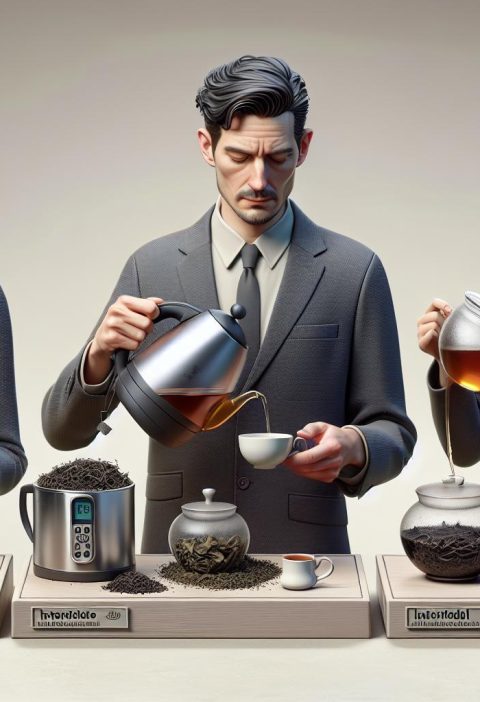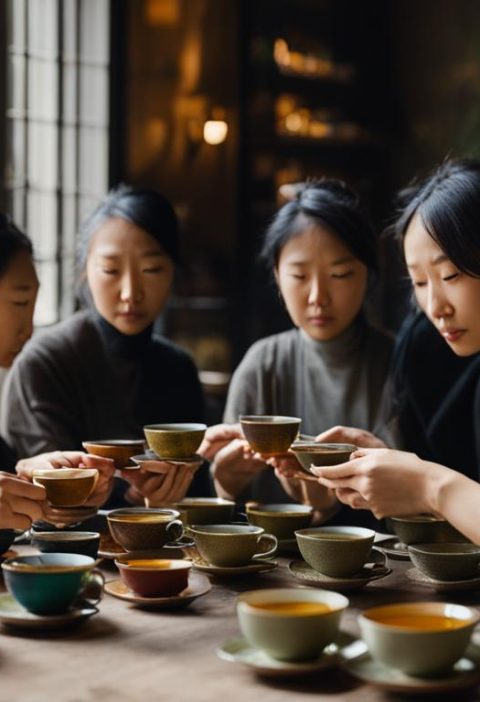So, you’re on a quest for the perfect cup of tea, right? Well, you’ve come to the right place! When it comes to brewing tea, getting the temperature just right is crucial for unlocking those delicate flavors and aromas. Whether you’re a seasoned tea enthusiast or just starting out, mastering the art of tea brewing temperatures is a game-changer.
Why Brewing Temperature Matters
Brewing temperature plays a crucial role in extracting the optimal flavors from your tea leaves. Whether you’re a novice or a seasoned tea enthusiast, understanding the significance of temperature is key to a satisfying tea experience.
For Beginners: Embracing the Basics
- Start by heating water to the appropriate temperature depending on the type of tea.
- Green teas are best brewed at around 160-180°F to avoid bitterness.
- Black teas, on the other hand, require hotter water, about 200-212°F, to unlock their full potential.
- Use a simple thermometer to gauge water temperature accurately.
For Intermediate Tea Enthusiasts: Elevating Your Brew
- Experiment with different temperatures within the recommended range for each tea type to find your preferred taste.
- Invest in a variable temperature kettle for precise control over brewing temperatures.
- Understand that delicate teas like white or green teas are more sensitive to high heat and can turn bitter if over-extracted.
- Delve into the world of specific temperature ranges for specialty teas like oolong or pu-erh.
- Consider the water-to-leaf ratio and infusion times alongside precise temperatures for a truly exceptional tea experience.
- Explore the impact of altitude and humidity on brewing temperatures for a deeper appreciation of tea nuances.
Remember, mastering brewing temperatures is a journey that enhances the subtle nuances and complexities of each tea variety – enriching every sip we take.
Types of Tea and Their Ideal Temperatures
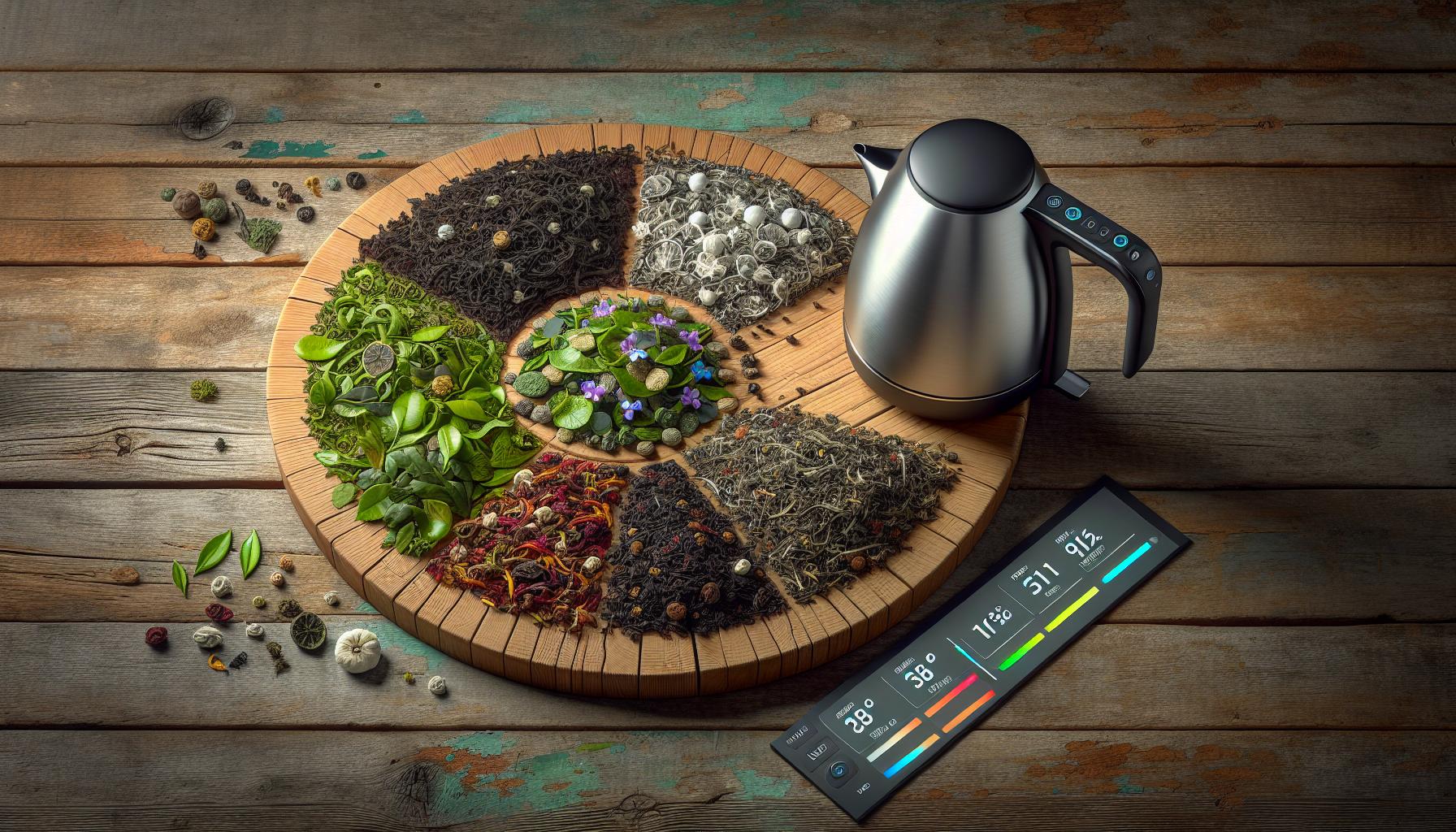
When it comes to brewing the perfect cup of tea, different types of tea require specific temperatures to bring out their unique flavors and aromas. Here’s a guide based on your expertise level:
For Beginners: Mastering the Basics
- Start with green tea at 160-180°F for a light and refreshing taste.
- White tea is best brewed at 160-180°F to maintain its delicate flavors.
- Oolong tea shines at 190-200°F for a balance between green and black teas.
- Black tea offers bold flavors when brewed at 200-212°F.
- Experiment with herbal teas at 200°F or higher for robust infusions.
For Intermediate Enthusiasts: Enhancing Your Brew
- Invest in a variable temperature kettle for precision brewing.
- Try different temperatures within the recommended range for each type of tea.
- Understand the sensitivity of delicate teas and adjust brewing temperatures accordingly.
- Explore oolong teas at 185-205°F for a spectrum of flavors.
- Delve into specific temperature ranges for specialty teas like Japanese green teas.
- Consider water-to-leaf ratios and infusion times for a customized brew.
- Recognize how factors like altitude and humidity can impact brewing temperatures.
- Experiment with oolong teas at varied temperatures to unlock complex flavors.
Remember, brewing tea is an art that evolves with practice. By mastering the ideal temperatures for each type of tea, our tea-drinking experiences become richer and more nuanced.
Importance of Using a Thermometer
Tea brewing precision is crucial for extracting the best flavors from your leaves. Using a thermometer ensures accuracy and consistency in water temperature, leading to a delightful tea experience.
For Beginners: Getting Started on the Right Foot
- Invest in an affordable kitchen thermometer for an easy tea brewing upgrade.
- Start with basic temperature guidelines for various tea types: 160-180°F for green tea, 200-212°F for black tea.
- Avoid guesswork and achieve optimal flavor extraction with a thermometer.
For Intermediate Enthusiasts: Elevating Your Brewing Game
- Upgrade to a variable temperature kettle for precise control over water heat levels.
- Experiment with temperatures within recommended ranges to uncover subtle flavor variations.
- Understand the sensitivity of delicate teas to temperature changes for a nuanced brew.
- Explore specialty teas that require specific temperature ranges to shine.
- Master the art of adjusting brewing temperatures based on factors like water-to-leaf ratios and altitude.
- Delve into the impact of humidity on brewing temperatures for a truly bespoke tea experience.
Embark on your tea brewing journey equipped with a thermometer to unlock a world of flavors and aromas that will elevate each sip.
Tips for Achieving Consistent Temperature
For Beginners: Establishing a Solid Foundation
- Start by investing in a quality thermometer to ensure accuracy.
- Follow basic temperature guidelines for various types of tea:
- Black tea: 205°F
- Green tea: 175°F – 185°F
For Intermediate Enthusiasts: Fine-Tuning Your Technique
- Upgrade to a variable temperature kettle for more precise control.
- Experiment with different temperatures to discover optimal brewing profiles.
- Understand that teas can be sensitive to slight temperature variations.
- Explore specialty teas with specific temperature requirements:
- White tea: 160°F – 180°F
- Oolong tea: 185°F – 205°F
- Adjust brewing based on tealeaf-to-water ratios and altitude for enhanced flavors.
- Consider the impact of humidity on brewing processes for a customized tea experience.
Throughout our tea brewing journey, mastering temperature control unlocks a world of flavors and aromas in every sip.
Experimenting with Different Temperatures

When it comes to brewing the perfect cup of tea, Experimenting with Different Temperatures can significantly impact the flavor profile. Whether you’re a novice tea enthusiast or a seasoned connoisseur, tweaking temperatures can unlock a whole new world of taste sensations. Here’s how you can tailor your tea brewing experience based on your expertise level:
For Beginners: Getting Started with Temperature Variations
- Start simple: Experiment with slightly cooler or hotter water temperatures to observe how they affect the taste of your tea.
- Invest in a basic thermometer: This tool will help you accurately measure the temperature of the water, ensuring consistency in your brewing process.
- Stick to the guidelines: Begin with standard temperature recommendations for different types of tea, such as 170°F for green tea and 200°F for black tea.
For Intermediate Enthusiasts: Fine-Tuning Your Brew
- Upgrade your equipment: Consider investing in a variable temperature kettle for more precise control over brewing temperatures.
- Explore the nuances: Delve into the specifics of each tea type and how they react to varied temperatures. For example, oolong tea may thrive at 190°F, while white tea may prefer 160°F.
- Adjust brewing parameters: Experiment with steeping times and tea-to-water ratios alongside temperature adjustments for a customized tea experience.
- Specialty teas and rare blends: Indulge in teas with unique temperature requirements, such as delicate yellow teas at 150°F or pu’erh teas at boiling point.
- Consider external factors: Account for altitude and humidity, which can influence brewing temperatures, especially for high-mountain teas.
- Fine-tune your technique: Perfect your brewing skills by mastering the subtle temperature variations that bring out the best in every tea leaf.
From beginners taking their first steps into the world of tea brewing to experts seeking to elevate their palate, adjusting temperatures opens up endless possibilities for tea enthusiasts. Savor the journey of discovery as you unlock the full potential of your favorite teas through temperature experimentation.
Conclusion
Mastering the art of tea brewing temperatures is a journey that elevates our tea experience. By experimenting with different temperatures, we unlock the full potential of each tea variety, enhancing its unique flavor profiles. Whether we’re beginners starting with basic temperature guidelines or intermediate enthusiasts exploring specific preferences, precise temperature control is key. As we delve into specialty teas with distinct temperature requirements, we embrace the influence of external factors like altitude and humidity on our brewing process. This journey of discovery not only refines our tea brewing skills but also deepens our appreciation for the intricate nuances of tea. Let’s continue to explore, experiment, and savor the diverse world of teas through the lens of perfect brewing temperatures.
